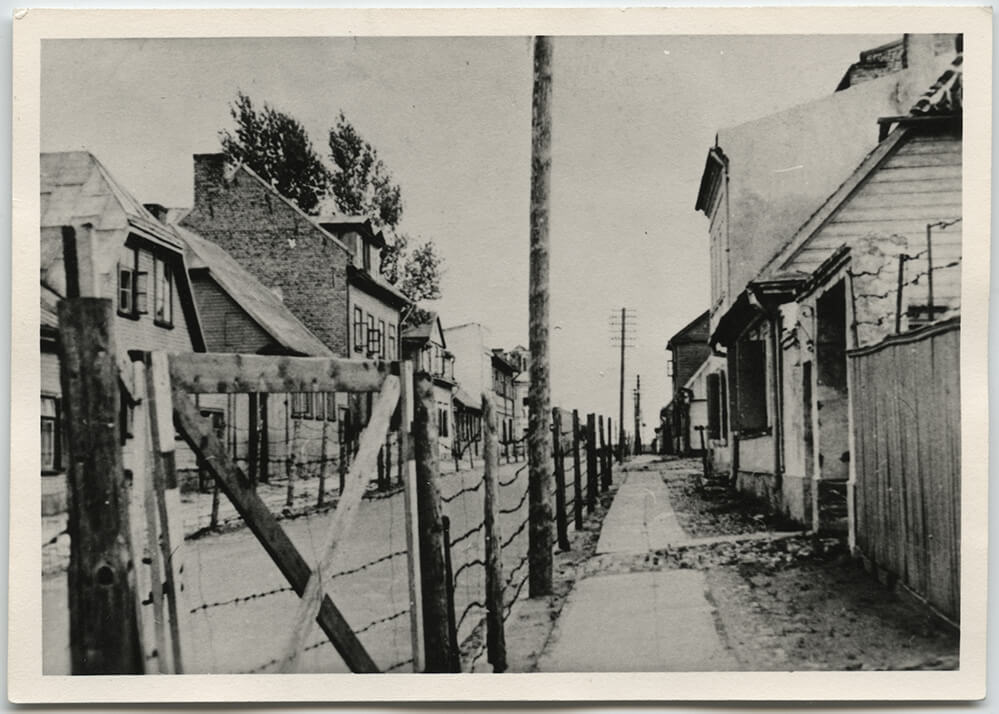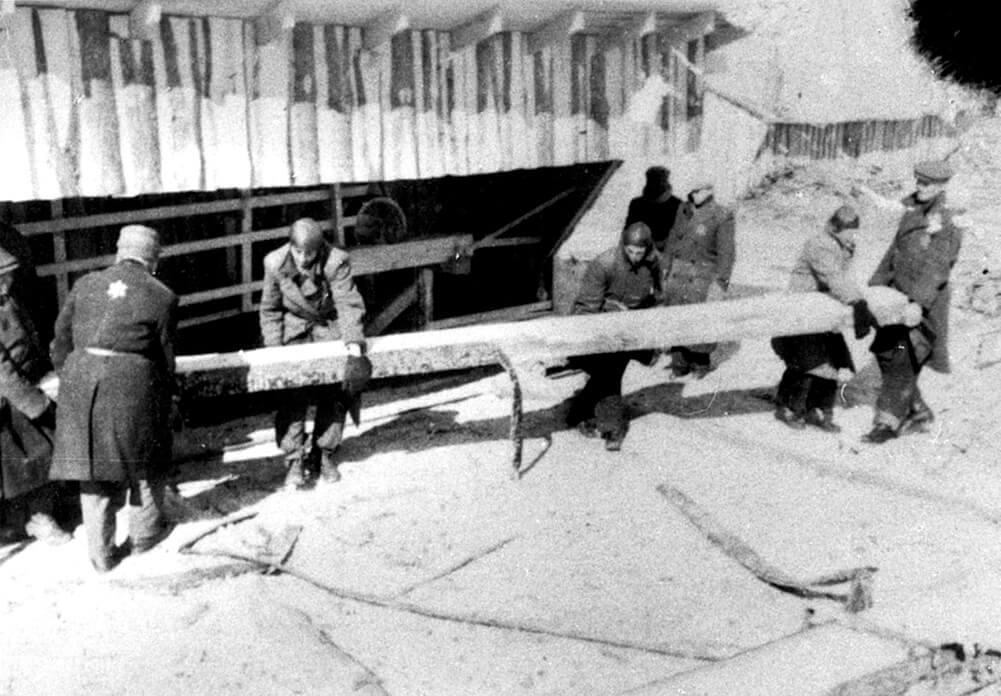Latvia

A street in the Riga ghetto at the time of the arrival of the transports from the Terezín ghetto.
Jewish Museum in PragueTerezín prisoners were faced with constant fear and uncertainty in January 1942, when 2,000 of them from Prague and Brno were put on two transports to the Latvian capital Riga. The first transport (O) was dispatched on 9 January, the second (P) on 15 January. After a three-day journey, the first train pulled into the goods station at Šķirotava, a suburb of Riga. The deportees were sent to the Riga ghetto, along with thousands of Jews from Germany and Austria. The Latvian Jews from the ghetto had been massacred in the nearby forests of Bikernieki and Rumbula. About 80 young men from the second Terezín transport were selected to work at the Salaspils concentration camp. They had to walk 20 kilometres to get there from the railway station. None of the deportees on the second transport made it to the Riga ghetto. Many of the Salaspils prisoners died from starvation, cold, and exhaustion. In the autumn of 1943, after the dissolution of the ghetto, the remaining prisoners were relocated to the Kaiserwald concentration camp. In 1944 the advancing front line led to the deportation of prisoners from the Baltic states to the Stutthof concentration camp near Gdańsk/Danzig and to the further use of forced labour in the Reich. In total, 1,881 of the prisoners deported from Terezín to Latvia perished. 131 remained alive at the time of liberation.
